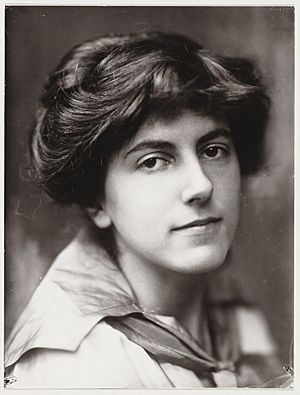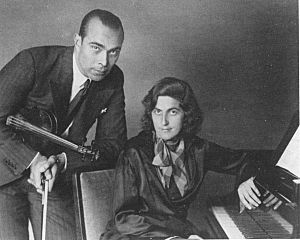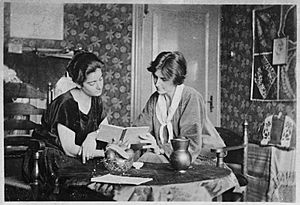Henriëtte Bosmans facts for kids
Henriëtte Hilda Bosmans (born December 6, 1895 – died July 2, 1952) was a talented Dutch composer and pianist. She was known for her beautiful music and her skill at playing the piano.
Contents
Early Life and Musical Training
Henriëtte Bosmans was born in Amsterdam, a city in the Netherlands. Her family was very musical. Her father, Henri Bosmans, was the main cellist for the famous Royal Concertgebouw Orchestra. Her mother, Sarah Bosmans-Benedicts, was a piano teacher at the Amsterdam Conservatory.
Sadly, Henriëtte's father passed away when she was only six months old. She learned to play the piano from her mother. She also studied how to compose music with teachers like Jan Willem Kersbergen, Cornelis Dopper, and Willem Pijper. By the age of 17, Henriëtte herself became a piano teacher.
Her Amazing Music Career
Henriëtte Bosmans first performed as a concert pianist in 1915 in Utrecht. She played concerts all over Europe. She performed with famous conductors like Pierre Monteux and Willem Mengelberg. Between 1929 and 1949, she played 22 concerts with the Concertgebouw Orchestra alone.
In 1929, she even played one of her own musical pieces at a concert in Geneva. Her compositions were also performed in the United States. For example, in 1940, the Cincinnati Symphony Orchestra played one of her works. The Boston Symphony Orchestra also performed her music in 1941.
Music During Difficult Times
During World War II, life became very hard for Henriëtte. Because her mother was Jewish, Henriëtte faced challenges from the German occupation. By 1942, she could no longer perform on public stages in the Netherlands. Her mother also faced danger, but Henriëtte helped her stay safe.
Since she couldn't perform, Henriëtte spent more time writing music. One of her songs became a symbol of freedom as the war ended. It was played when Allied soldiers arrived in the Netherlands.
After the War and Recognition
After the war, Henriëtte Bosmans published her musical works. She wrote many songs for her close friend, the French singer Noémie Pérugia. These songs were written between 1949 and 1952.
In 1951, Henriëtte was honored for her contributions to music. She was made a knight, becoming a member of the Royal Order of Orange-Nassau.
Her Life and Lasting Impact
Henriëtte Bosmans often worked with other musicians. From 1920 to 1927, she had a close partnership with the Dutch cellist and conductor Frieda Belinfante. Frieda was also a member of the Dutch Resistance during World War II, helping to fight against the occupation. In 1923, Frieda was the first to perform Henriëtte's Second Cello Concerto.
Later, Henriëtte was briefly engaged to a violinist named Francis Koene. Sadly, he passed away in 1934 before they could get married. Henriëtte Bosmans died in Amsterdam in 1952 at the age of 56. She is buried in the Zorgvlied cemetery in Amsterdam.
Honoring Her Memory
To remember Henriëtte Bosmans and her amazing talent, a special award was created. The Henriëtte Bosmans Prize encourages young Dutch composers. This prize has been given out since 1994 by the Society of Dutch Composers. It includes money and a chance for the winner's music to be performed.
In 2017, a singer named Pauline van der Roest performed a concert of Bosmans' works in Canada. In 2020, two musicians from North America, Leah Plave and Dan Sato, recorded all of Bosmans' works for cello and piano. Her music continues to be enjoyed and celebrated today.
Selected Musical Works
- Six Preludes for solo piano (1917–1918)
- Sonata for violoncello and piano (1919)
- Concert Piece for violin and orchestra (1935)
See also
 In Spanish: Henriëtte Bosmans para niños
In Spanish: Henriëtte Bosmans para niños




